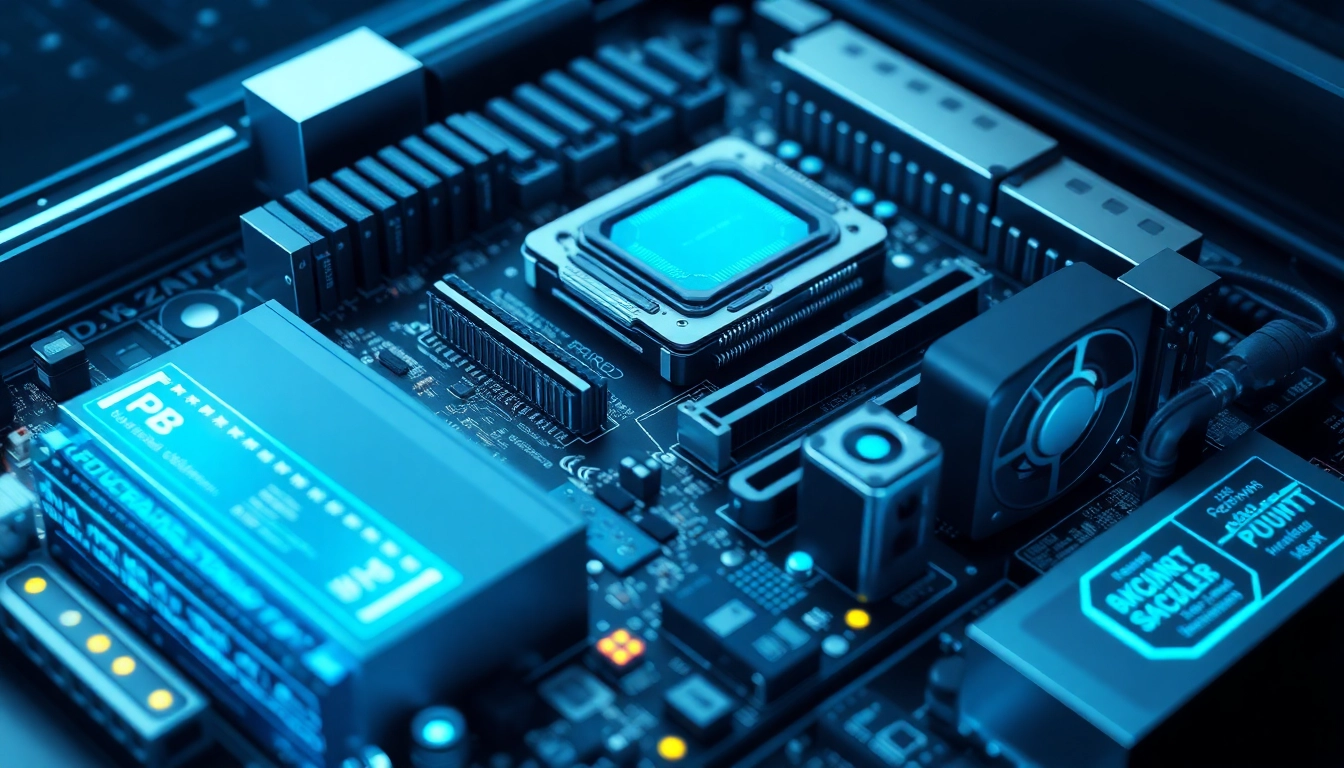Understanding the Core Components of Servers: Main Hardware Elements
In the rapidly evolving landscape of enterprise technology, servers form the backbone of modern IT infrastructure. Whether utilized for hosting websites, managing large databases, or supporting critical business operations, the effectiveness of a server hinges on the quality and compatibility of its core hardware components. For businesses and IT professionals aiming to optimize performance, investing in the right componente server is essential. This comprehensive guide explores the fundamental hardware elements that build robust, efficient, and scalable servers, along with insights into upgrading, troubleshooting, and future trends.
CPU and Processing Power: The Brain of Your Server
The Central Processing Unit (CPU) is often regarded as the “brain” of the server, responsible for executing instructions, managing data traffic, and coordinating all tasks. High-performance CPUs with multiple cores and threads—such as Intel Xeon or AMD EPYC processors—are standard in enterprise environments to handle demanding workloads.
Modern server CPUs, like the Intel Platinum 8164 or AMD Ryzen Pro 2400G, feature advanced architectures supporting virtualization, multi-threaded processing, and energy efficiency. When selecting a processor, consider factors such as core count, clock speed, cache size, and compatibility with the server motherboard. This ensures the CPU can meet your specific workload requirements, whether it’s hosting web applications, data analytics, or intensive computations.
For example, deploying a server with a dual Intel Xeon Gold 6132 configuration can significantly boost performance in database management or virtualization scenarios, ensuring minimal latency and high throughput. Upgrading the CPU can also extend the server’s lifespan and adaptability to evolving IT needs.
Memory Modules: Enhancing Speed and Multitasking Capabilities
Memory (RAM) is critical for server performance, directly influencing how well a server can multitask and handle concurrent operations. Servers often employ large capacities of DDR4 RAM, with configurations reaching 128GB or more for high-demand environments, such as data centers and AI workloads.
For instance, servers designated for virtual host environments benefit from ample memory—up to 64GB or 128GB—accelerating virtual machine performance and reducing bottlenecks. The choice of ECC (Error-Correcting Code) RAM further enhances reliability by detecting and correcting data corruption, ensuring operational stability.
Optimal memory configuration requires balance with processor capabilities and application demands. Properly calibrated RAM not only facilitates smoother performance but also minimizes errors and system crashes, critical in mission-critical applications.
Storage Drives: Choosing Between SSDs and HDDs for Reliability and Speed
Storage is a cornerstone component dictating data access speed, capacity, and reliability. The advent of SSD technology, particularly NVMe drives like the Dell D3-S4520 480GB SATA SSD, has revolutionized server storage, delivering lightning-fast read/write speeds essential for high-frequency data processing and database hosting.
Traditional HDDs, such as the Seagate Constellation ES.3 series with 3TB capacity and 7200 RPM, serve well for archiving and backup purposes where speed is less critical. Blending SSDs for active data and HDDs for cold storage can optimize both performance and cost-efficiency.
Implementing RAID configurations—like Broadcom LSI MegaRAID 9440-81 controllers—ensures data redundancy and fault tolerance. Business-critical applications demand reliable storage solutions, and selecting the right drives and RAID setups minimizes downtime and data loss.
Essential Components for Server Efficiency and Stability
Motherboard and Chipsets: Building a Solid Foundation
The motherboard acts as the central backbone connecting all hardware components. Choosing a compatible and robust motherboard with features like multiple PCIe slots, support for high-speed memory, and integrated controllers (e.g., Broadcom 57810 Dual Port 10Gb Ethernet) ensures seamless component integration.
Server motherboards like those supporting Intel Xeon processors often have specialized chipsets that facilitate advanced functions such as remote management and hardware monitoring. Proper selection promotes system stability and scalability.
Power Supplies: Ensuring Continuous Operation
Reliable power supplies are vital for preventing downtime. Enterprise-grade PSUs provide redundancy (e.g., dual 495W units in Dell PowerEdge T340), protecting against power failures and ensuring continuous operation. High-efficiency units also reduce energy costs and thermal output.
Network Interface Cards: Facilitating High-Speed Connectivity
Networking is fundamental to server performance. Dual-port 10Gb Ethernet cards like the Broadcom 57810 enable high-throughput data transfer, essential for data centers and cloud computing. Proper network interface selection supports scalability and reduces latency, thereby optimizing overall performance.
Upgrading and Maintenance of Componente Server
Component Compatibility and Selection Tips
Ensuring compatibility between components like CPUs, memory modules, and motherboards is crucial. Consulting manufacturer specifications and choosing components that support the same standards (e.g., DDR4, NVMe) can prevent costly incompatibilities. Regular firmware updates further enhance stability and security.
Best Practices for Hardware Installation and Updates
Proper installation involves static precautions, accurate fitting, and connection checks. When upgrading, it’s advisable to perform incremental replacements—such as adding more RAM or switching to faster SSDs—to minimize system disruption. Maintaining detailed documentation aids in future upgrades and troubleshooting.
Monitoring and Troubleshooting Performance Issues
Utilize management tools like Dell’s iDRAC or HP’s iLO for remote hardware monitoring. Regularly checking system logs, temperature readings, and performance metrics helps identify potential failures early. Troubleshooting often involves component testing, upgrading outdated hardware, or reconfiguring RAID arrays for optimized data flow.
Emerging Trends and Future of Server Components
Advancements in NVMe Storage and Fast Networking
The future points to greater adoption of NVMe drives and multi-gigabit networking, as evidenced by the integration of 25Gb SFP28 interfaces like Intel XXV710-DA2. These enhancements drastically reduce data bottlenecks, enabling real-time analytics and AI workloads.
Eco-friendly and Energy-efficient Hardware Innovations
With sustainability in focus, hardware manufacturers are developing energy-efficient components, including low-power CPUs and power supplies with high-efficiency ratings (e.g., 80 PLUS Titanium). Such innovations reduce operational costs and environmental impact.
Integration of AI and Automation in Server Hardware Management
AI-driven management systems optimize hardware performance, predict failures, and automate routine maintenance tasks. These technologies improve uptime and streamline overall server management, making hardware components more intelligent and adaptable.
Performance Metrics and Choosing the Right Components
Assessing Server Workload Requirements
Understanding your workload—whether it involves database transactions, virtualization, or machine learning—is fundamental in selecting appropriate hardware. Benchmarking tools and workload analysis can guide component choices that balance performance and cost.
Benchmarking Hardware for Reliability and Speed
Use industry-standard benchmarks like SPECint, IOPS, and throughput tests to evaluate hardware capabilities objectively. Comparing these metrics ensures that selected components meet your performance targets without over-specification.
Cost-Effective Strategies for Hardware Procurement
Opt for refurbished or certified components, such as those currently available in stock for servers and components, which offer a balance between performance and affordability. Bulk purchasing and supplier negotiations can further reduce costs while maintaining quality standards.



